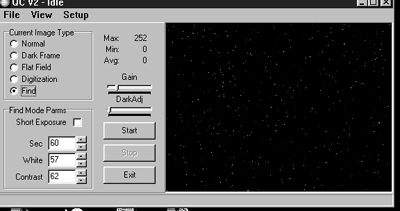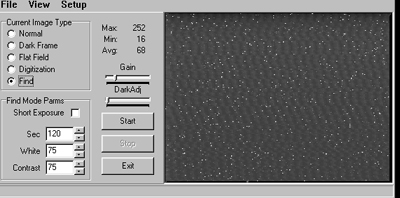 This is a 60 second exposure dark frame
This is a 60 second exposure dark frameHerringbone Interference Problem?
Below are two dark frames taken with the greyscale quickcam with anti-blooming disabled:
 This is a 60 second exposure dark frame
This is a 60 second exposure dark frame
 This is a 120 second exposure dark frame
This is a 120 second exposure dark frame
I did not expect to see the herringbone pattern (wavy lines) in the 120 second dark frame. This is my first experience doing long exposure ccd imaging, so I may be missing something very basic here. But the lines seem to shift in orientation on different images. Is this normal and something that can be subracted using a flat or white frame?
Scope used: 10 inch LX200 as above but with a Celestron f 6.3 reducer.
I happened to use my cordless phone near my scope/imaging setup and it picked up enough interference that it would not function within a few feet from my setup. I suspect that a lighted outlet strip that I use for my equipment may be a possible problem. The herringbone effect appeared to be less with the eyepiece end of the scope away from the power strip side.
I'm hoping that the problem isn't caused by the disconnection of the yellow wire in the quickcam that disables anti-blooming. Anyone else have this problem?
UPDATE 1/18/00 - Herringbone Problem Reduced Greatly
I found that almost all of the interference problem was caused by a power outlet strip with an indicator light that I was using for my equipment. Below is a 120 second exposure dark frame with the outlet removed; compare to above image with the same settings. On a few images I am getting very minor herringbone interference that I will address by incorporating shielding in my cooled quickcam.
Go to next page: Long Exposure Results